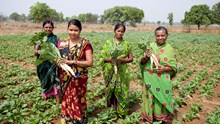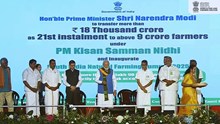
As the demand for sustainable seafood and marine products increases, innovative practices like Integrated Multi-Trophic Aquaculture (IMTA) are gaining attention. IMTA is a smart farming method that combines seaweed and fish cultivation in the same marine space, benefiting both the environment and farmers.
What is IMTA?
IMTA is a holistic approach to aquaculture where multiple species from different levels of the food chain are grown together. In this system, waste nutrients from fish are absorbed by seaweed and other filter feeders like mussels. This not only reduces pollution but also creates a more balanced ecosystem. It mimics nature’s way of recycling nutrients, leading to healthier growth and efficient resource use.
Globally, countries are adopting IMTA to promote environmentally responsible aquaculture. In India, the Central Marine Fisheries Research Institute (CMFRI) has successfully demonstrated IMTA by integrating seaweed cultivation with the cage farming of cobia. This model has led to improved yields and increased income for coastal communities.
Environmental and Economic Benefits
According to ICAR-CMFRI, implementing IMTA offers several advantages:
1. Higher Seaweed Yields
One of the biggest advantages of IMTA is the significant increase in seaweed production. Under IMTA systems, seaweed yields can go up to 390 kg per raft, which is a 56% improvement compared to conventional methods that produce around 250 kg. This jump in productivity ensures better returns and less environmental impact.
2. Faster and Better Growth
IMTA also accelerates the growth of seaweed. With just 1 kg of planting material, farmers can harvest 6.4 kg of seaweed in 45 days. In comparison, non-IMTA systems only yield 4.1 kg. This means faster turnaround times and the ability to meet rising market demands more effectively.
3. Environmental Sustainability
By recycling waste nutrients, IMTA minimizes eutrophication and improves water quality. Seaweeds absorb dissolved nutrients, while shellfish filter organic particles, leading to cleaner aquatic environments.
4. Economic Benefits for Farmers
IMTA isn’t just environmentally friendly, it’s economically smart too. Farmers practicing IMTA report earning 18% more income per production cycle. On average, this translates to an additional Rs 86,016 in net gains. The dual farming system optimizes labor and space, making aquaculture more profitable for small and medium-scale producers.
5. Economic Diversification
Cultivating multiple species reduces financial risks associated with market fluctuations. If demand for one species declines, revenue from others can offset losses, ensuring economic stability for farmers.
Integrated Multi-Trophic Aquaculture represents a promising approach to sustainable seafood production. By mimicking natural ecosystems, IMTA enhances environmental health, diversifies income sources for farmers, and contributes to the global goal of sustainable aquaculture.
















